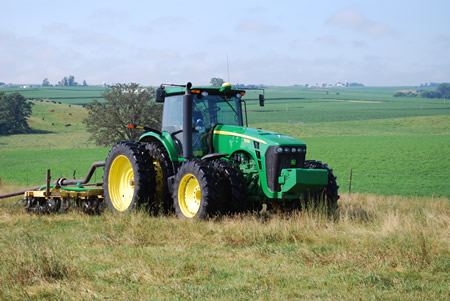Co-Investigator(s): Ann Lewandowski and Dennis Busch
Organization(s): University of Minnesota Water Resources Center and University of Minnesota Extension
Award Amount: $48,500
Start Date: 6/1/2007 | End Date: 7/15/2008
Project Manager(s): Adam Birr and Bruce Montgomery
FINAL REPORT: Feasibility of an On-Farm Water Quality Program in Minnesota (PDF)

The research from this project provided the foundation to starting a Discovery Farms program in Minnesota.
The goal of this study was to explore the feasibility of adopting an on-farm demonstration network, similar to Discovery Farms Wisconsin, in Minnesota. The Discovery Farms programs emphasize local grower involvement to address questions about the relationship between agricultural land use and water quality.
Researchers examined the potential value, cost, designs, and support needed to develop an on-farm monitoring network. Programs from multiple states, including Arkansas, North Dakota, and Wisconsin, were reviewed. The information included in the final report summarizes program development, operational structure, stakeholder involvement, funding and budget, data collection and dissemination of information.
What is a Discovery Farm?
- On-farm monitoring network with the goal of discovering and understanding water quality issues at the farm scale
- A meaningful way for the agricultural community to be engaged in water quality issues
- An opportunity for producers to learn from each other about the relationship between agriculture and water quality
- An opportunity to validate research results, examine the economic implications of recommendations and suggest future avenues of research
Core Messages and Recommendations
The Discovery Farms Wisconsin program inspired discussions of on-farm monitoring in Minnesota. It is recommended that it be the primary model for a Minnesota program. At the time of this project the Wisconsin program had existed for nearly a decade; demonstrating substantial and unique impacts, and providing many lessons for Minnesota.
The Discovery Farms Wisconsin program has clearly affected farmers, rule makers and other stakeholders who now expect information from the program to be a regular part of their water quality discussion.
- Outreach should be a central component of the program.
- Any new on-farm water quality program should build on the strength of Minnesota’s existing research station network while filling in gaps between plot level research and watershed-scale monitoring to improve the empirical understanding of farm-scale agricultural runoff.
- Monitoring stations should complement, not duplicate, efforts at existing research stations.
- A network of water quality monitoring stations should be established on working farms to assess runoff at the field or multi-field scale. In addition to water quality data, the program should collect information about farm practices, finance and crop data such as yield.
- On-farm monitoring sites should be selected to represent major agricultural systems and regions across Minnesota.
- Monitoring design should allow for comparison with Discovery Farms Wisconsin and North Dakota.
- At least some of the sites should be positioned within monitored watersheds to examine the relationship between farm runoff/drainage and surface water quality.
- Program directors should answer to a strong steering committee dominated by members of the major agricultural producer organizations.
- Funding should come from diverse sources to avoid being tied to the mission of a single agency or group.
The network will provide meaningful research, practical and economical solutions, educational opportunities and guidance to Minnesota producers, researchers, water resource managers and other stakeholders.
Final Report
The final report includes reviews of multiple monitoring programs including the Wisconsin, North Dakota and Arkansas Discovery Farms programs as well as the Pioneer Farm program at the University of Wisconsin-Platteville. It also reviews water quality monitoring programs that existed in Minnesota at the time of the study.

